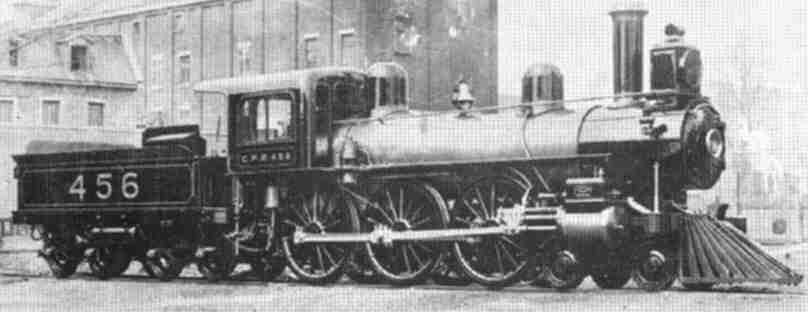
Reciprocating Steam Engine Cycles
Dr. W. Hallett
The classical steam engine, as exemplified by the locomotives, marine engines, and small
industrial power plants of 50 years ago, is usually considered to be obsolete technology. Its main
disadvantage, when compared with modern Diesel and gas turbine engines or present day steam
turbine power plants, is a low thermal efficiency. However, it has some advantages which cause
periodic revivals of interest:
These considerations have motivated two studies of reciprocating steam cycles undertaken as
fourth year theses at the University of Ottawa, in which computer models for the boiler and for
the engine cycle of classical steam locomotives were developed. The boiler model assembled
standard heat transfer correlations into a program capable of predicting the heat transfer
efficiency of a locomotive-type (firetube) boiler. The engine model is a detailed numerical
simulation of the thermodynamic cycle - admission, cut-off, expansion, release, exhaust, and
compression - and includes simple models of valve gears and valve events as well as the
important effects of valve port pressure loss (so-called "wire-drawing"). Although the main focus
of these projects was historical, the work provides insight into the main losses of the classical
cycle, and gives a starting point for exploring the real potential of a reciprocating engine. For a
locomotive, the main sources of inefficiency are:
All of these could be improved on substantially with modern design and controls.

Canadian Pacific SM class 4-6-0 of 1889 - one of the locomotives simulated in the engine cycle study
Fourth Year Theses
Gillard, Sandrine (INSA Lyon): Simulation/Improvement of the reciprocating steam cycle. Projet fin des études, INSA Lyon/Université d'Ottawa, 2000.
Murphy, Kathleen: Two FORTRAN Models for a single-acting reciprocating steam engine. BASc Thesis, Mechanical Engineering, University of Ottawa, 1999.
Glover, Lisa: A steam locomotive boiler analysis. BASc Thesis, Mechanical Engineering, University of Ottawa, 1995.

New York Central J1b class 4-6-4 of 1927 - simulated in the boiler and in the engine cycle studies
Return to Dr. Hallett's home page
Last update 21 August 2000